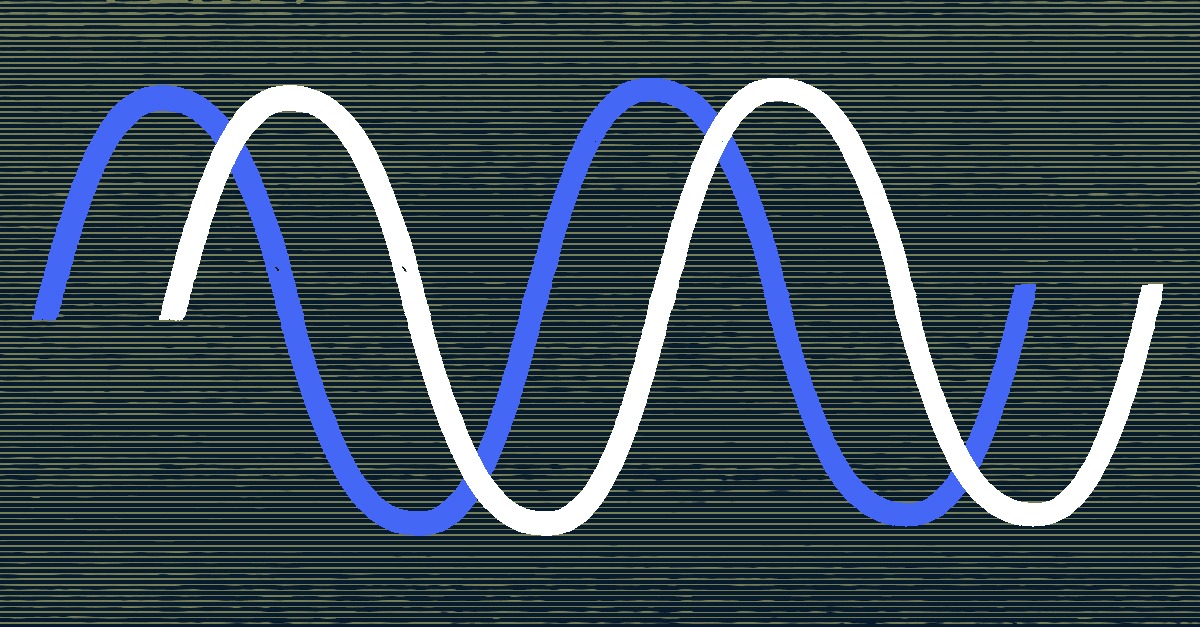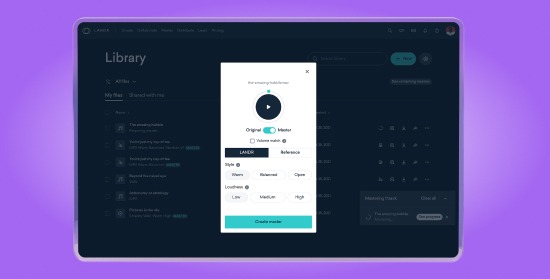
What is Out of Phase Audio and How to Fix It

Recording music in a home studio isn’t always as simple as it seems.
Even if you’re just using basic gear like a microphone and audio interface to record yourself, you can still run into complicated technical issues.
One of the most confusing problems that beginner and intermediate producers struggle with is out of phase audio.
But what causes phase issues? What do they sound like and how do you fix them? With such a complex issue it’s easy to get frustrated.
But it doesn’t have to be intimidating. Phase problems are simple enough to diagnose and fix once you understand why they happen and how to avoid them.
In this article I’ll explain everything you need to know about out of phase audio.
What is phase in audio?
Phase in audio refers to the position of a sound wave in time.
Think of a sine wave on a graph. The wave’s phase is its position along the x-axis.
For a periodic waveform, the phase tells you the point along its shape where the wave’s pattern begins.
The term periodic means that a sound’s wave shape repeats in the same pattern over and over again.
As you shift the wave forward or backward in time, the wave’s starting point moves through each possible position in the shape before it repeats again.
Forward or backward changes in the start point are called phase shifts.
Phase shift is measured in degrees—because once you’ve shifted all the way to the next period of the waveform, you’ve come full circle!
For a periodic waveform, the phase tells you the point along its shape where the wave’s pattern begins.
Why is phase important?
Phase issues can have a big effect on the sound of your recordings. They come into play every time you record a source with more than one microphone at a time.
The reason why has to do with a problem called destructive interference.
Imagine two identical signals. They are completely in phase if their waveforms begin at exactly the same time.
If one of those signals were phase shifted by 180 degrees, the two signals would be fully out of phase. Their two waveforms would be at the exact opposite point in the cycle.
Identical waveforms that are 180 degrees out of phase will cancel each other out completely when summed due to destructive interference.
This means that the result of the two signals mixed together is silence!
In the real world, you’ll never record two completely identical signals with two different mics on the same source, but there can still be problems if the signals are related.
One example is the common practice of recording a bass guitar with a DI box as well as a mic’d up amp.
Since the sound takes time to travel through the air and reach the microphones, it may be out of phase with the DI.
Identical waveforms that are 180 degrees out of phase will cancel each other out completely when summed due to destructive interference.
As soon as any phase shift occurs, the relationship between the two signals changes.
You might not notice the effect of small phase differences between two microphones at first. But the more “out of phase” the two are, the more they will start to compete.
How to find phase issues
Luckily, it’s easy to hear when two signals are badly out of phase.
If two related tracks sound thinner, tinnier or harsher when combined, there’s a good chance they suffer from this issue.
To be 100% sure you can insert a utility plugin on one channel and use the Ø phase symbol button to invert the phase by 180 degrees.
If that makes the low end and punch of the sounds return, it confirms that phase is the culprit.
Hot tip: To evaluate the phase relationship between signals that don’t cancel out dramatically you use your DAW’s phase correlation meter. Here’s a helpful guide on how to read it.
How to fix phase issues
With all the damage that out of phase audio can cause in your sessions, you’ll need strategies to avoid the worst problems.
Here are three ways to deal with the most common phase problems in music production:
1. Avoid them at the source
The best way to fix phase issues is to avoid them completely.
The best way to fix phase issues is to avoid them completely.
Just like the utility plugin in your DAW, mic preamps and audio interfaces feature a toggle with the diameter symbol Ø.
This is an option to invert the polarity by 180 degrees using the preamp’s hardware. If you need to determine whether two signals are out of phase, try pressing it and listening carefully to the result.
If engaging the Ø switch causes lots of low end and punch to return, your signals are likely out of phase.
There are several recording situations where you can expect a signal to be close to 180 degrees out of phase.
The most common is recording a snare drum with both a top and bottom microphone.
Sound waves radiating from the top and bottom heads will naturally be out of phase. Remember to check your phase if you’re recording both sides of the snare!
2. Measure the distance between mics
You’ll sometimes see pro engineers using a length of cable to make measurements as they set up microphones.
They’re using the 3:1 technique, which is an eyeball method to help diminish the effect of bad phase relationships.
The rule of thumb is to place additional microphones 3x the distance away from the source as the first.
For example, say you’re recording an electric guitar cabinet from 6 inches away with your main microphone.
The second microphone should be placed 18 inches (3x the original distance) away from the first.
This is a handy way to get a workable sound quickly, but it has some downsides.
The position of the microphone has a massive effect on the sound it picks up. The best sounding position for one individual microphone may not be the right one to be in-phase.
If neither of these options is right for solving your problem, there are a few options you can try inside your DAW.
3. Fix the phase on the timeline
Since phase issues are created by timing differences, it’s possible to resolve them by shifting regions on the timeline by small amounts.
Since phase issues are created by timing differences, it’s possible to resolve them by shifting regions on the timeline by small amounts.
Zoom in extremely closely on a region and nudge it gently until the waveforms are no longer cancelling.
This approach can work for some closely related sources like multiple mics on guitar or bass, but it’s not advisable for drums.
The natural phase differences between mics on a drum kit contribute a lot to the sound. Flattening the timing of the waveforms to get them perfectly in phase will sound odd and unnatural.
Do your best to get drum mics right at the source.
4. Use a plugin to fix the phase
There are some plugins that are designed specifically to help you fix phase issues.
While many of them perform essentially the same function as shifting the regions on the timeline, some plugins offer ways to get more specific about how you deal with phase conflicts.
Here are a few respected plugins to help with phase issues:
Phase issues in your mix
Once you start paying attention to phase relationships, you’ll notice they can affect your mix as well.
These are more advanced than basic out of phase tracks, but they’re important to be aware of as you work.
EQ plugins affect phase
EQ plugins are necessary to make your tracks fit together musically. Unfortunately, it has a side effect.
The filters that change the frequency of a signal also introduce a small amount of phase shift. This can be a problem if you’re using lots of EQ on mics that captured the same source.
Hot tip: Some EQs include an option that handles phase shift differently. These are the so-called “linear phase” modes of EQ. Here’s a video that explains how they work and when to use them.
Even the small phase differences created by EQ can result in destructive interference. This is a great reason to do processing on buses if you possibly can.
Stereo widening can cause phase problems
There are a lot of stereo width plugins out there that promise to magically make your mix wider.
It may seem tempting to use them everywhere to increase the soundstage of your mix. But be careful—these types of plugins can trip you up.
Stereo widening effects often work by introducing phase differences between the left and right panned elements.
If you go overboard with this type of processing, you’ll be setting yourself up for destructive interference between the left and right sides of your mix.
Get in phase
Phase problems seem like an advanced scientific concept.
But the ones that matter most in your mix aren’t hard to hear and fix. Even so, taking the time to check for phase problems and deal with their negative effects will make your mix better on the whole.
If you made it through this article you’ll have a great start to deal with out of phase audio.
Gear guides, tips, tutorials, inspiration and more—delivered weekly.
Keep up with the LANDR Blog.



